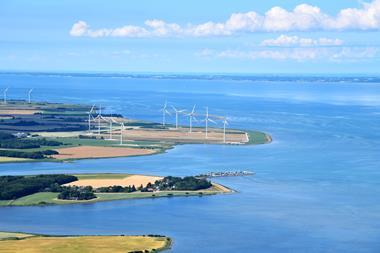IFM Investors has urged institutional investors to carve out infrastructure from their alternatives portfolios and to establish it as a “foundational” asset class.
In a paper, the US$74.2bn (€67.2bn) infrastructure fund manager has made the case for infrastructure to become a “portfolio cornerstone”, comparable to – and even potentially replacing – real estate.
IFM Investors cites a “convergence point” where infrastructure is becoming “mainstream”, has demonstrated resilience and low correlation with other asset classes and is set to be boosted by the energy transition.
“The global energy transition will arguably be the most significant structural change undertaken since the early industrial revolution,” the paper says. “Over the next three decades, over US$100trn will need to be deployed to completely restructure our economy – much of which will take the shape of infrastructure equity funding for renewable energy and climate change adaptation methods.”
The paper also says this trend coincides with “significant – and potentially permanent – changes to other alternative asset classes”, including real estate which has undergone a correction and is facing challenges, including a structural decline in demand for offices.
“Historically, property has been considered a foundational asset for many institutional investors,” the paper says. “But in light of the seismic changes occurring in commercial property, and both listed and unlisted property’s weaker performance, with higher volatility than unlisted infrastructure, this allows for a discussion as to whether a shift away from commercial property will see infrastructure take its place in portfolios.”
Increasing competition from infrastructure – both in terms of capital allocations and assets – was a key topic of discussion among real estate investors and fund managers at the annual MIPIM trade fair in Cannes earlier this year.
IFM Investors, which is owned by Australian superannuation funds, has also urged institutional investors in the US, UK, continental Europe and Asia to follow the example of Australian and Canadian investors, which moved into infrastructure in the 1990s and early 2000s and benefitted from a “first-mover advantage”.
The ongoing shift from defined-benefit (DB) pension schemes to defined contribution (DC) in these regions could bring about opportunities in this regard, the paper suggests. “The re-evaluation of infrastructure, coupled with many European countries transitioning from a legacy DB market with a limited investment horizon to one with large, dominant and cashflow positive DC funds, will potentially allow investors to replicate the success of Australia’s superannuation sector,” it says.
“These DC funds will be able to invest their beneficiaries’ savings to support, and ultimately, accelerate the coming energy and net-zero transition that will require existing infrastructure to be upgraded and the construction of the next generation of infrastructure assets.”
Kyle Mangini, global head of infrastructure at IFM Investors, said: “The resilience of infrastructure returns has been in the spotlight due to recent market volatility, and investors around the world are starting to catch on to what IFM’s known for almost 30 years – infrastructure should be treated as a portfolio cornerstone.
“We’re at a convergence point where the asset class is starting to become mainstream, with inflows and deal competition ramping up, and a massive opportunity set emerging through the global energy transition.
“It’s a really exciting time for the sector. IFM led the emergence of the infrastructure asset class in the 1990s, and we think with the current market conditions and investment opportunities, the first-mover advantage that led to strong returns for Australian and Canadian investors 30 years ago is back and available for global investors today.”
To read the latest IPE Real Assets magazine click here.























